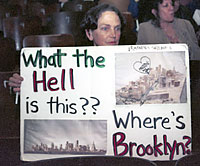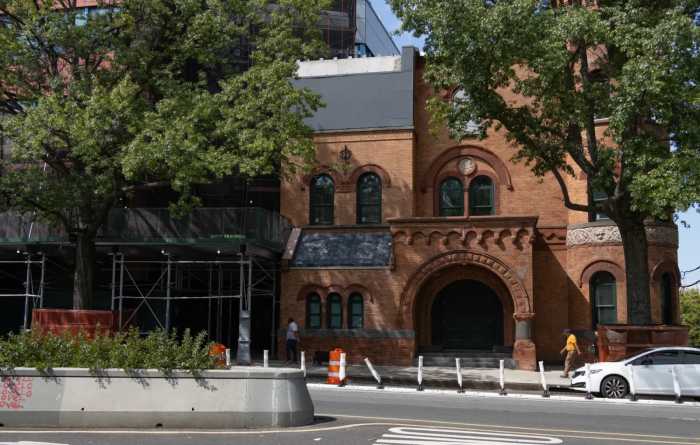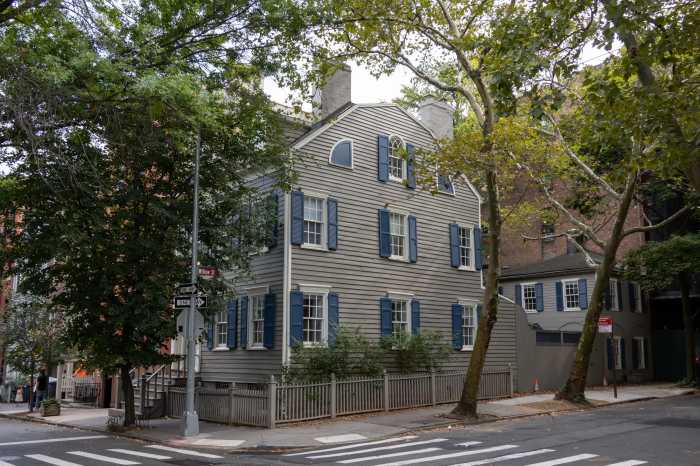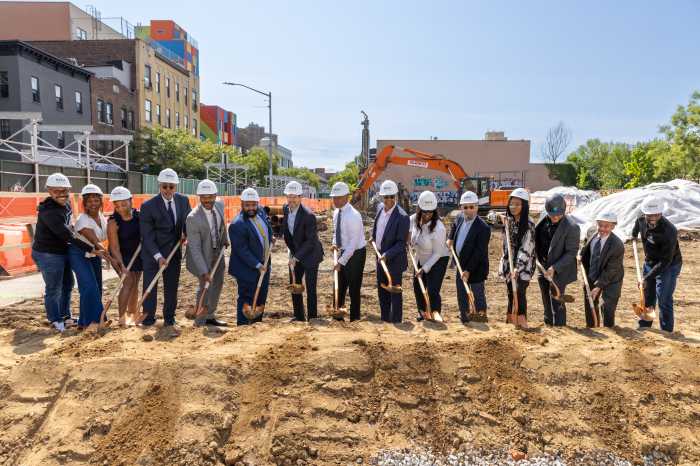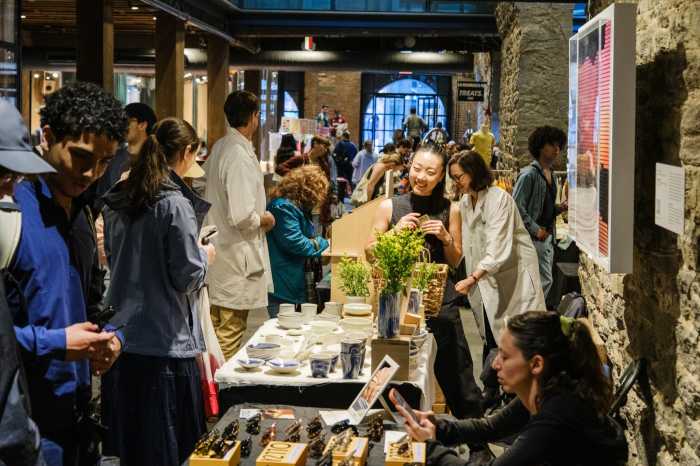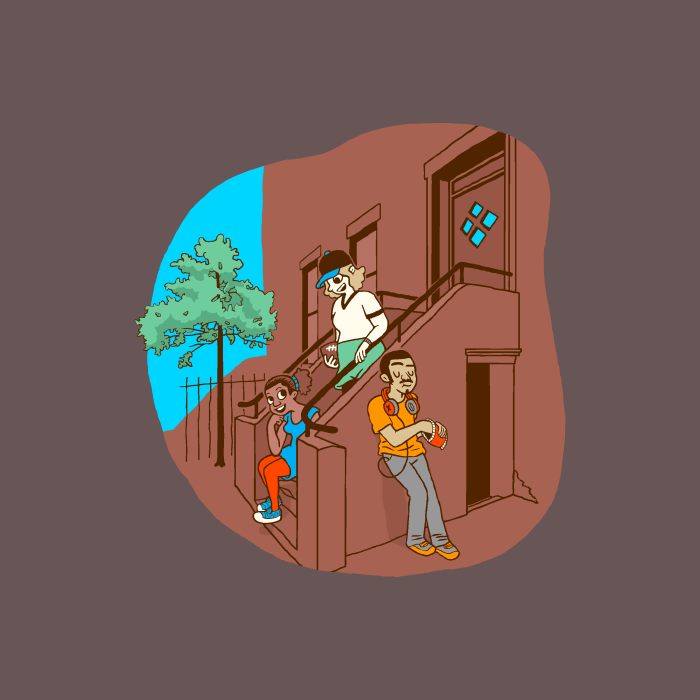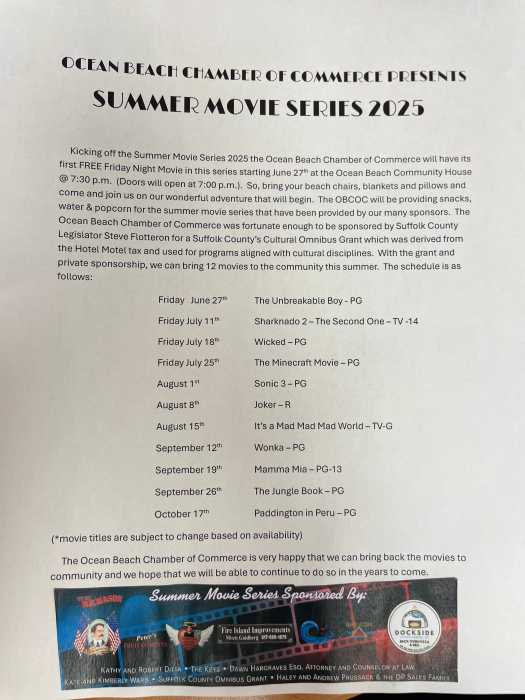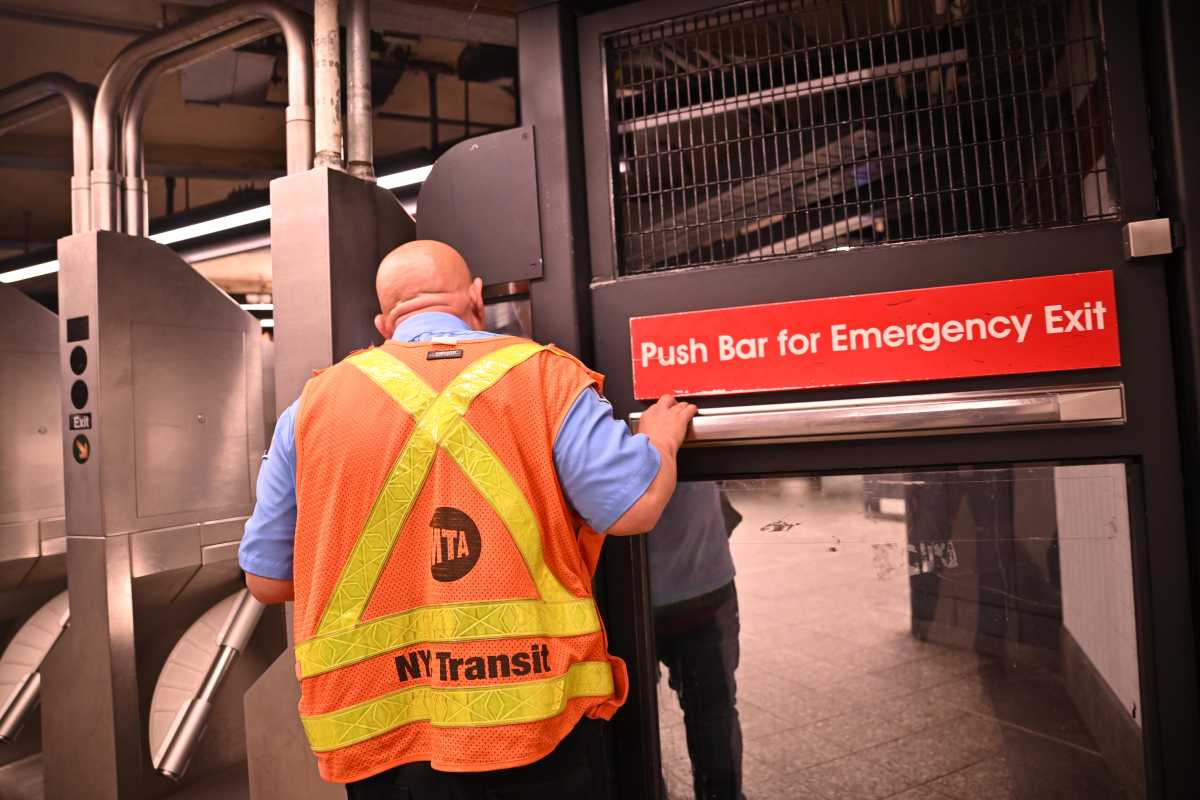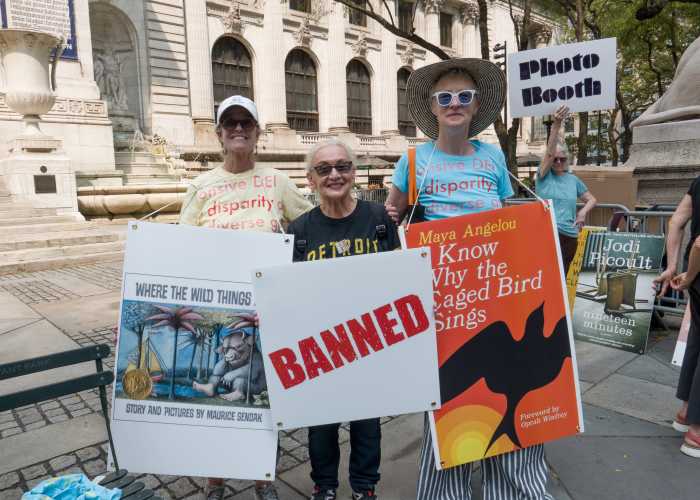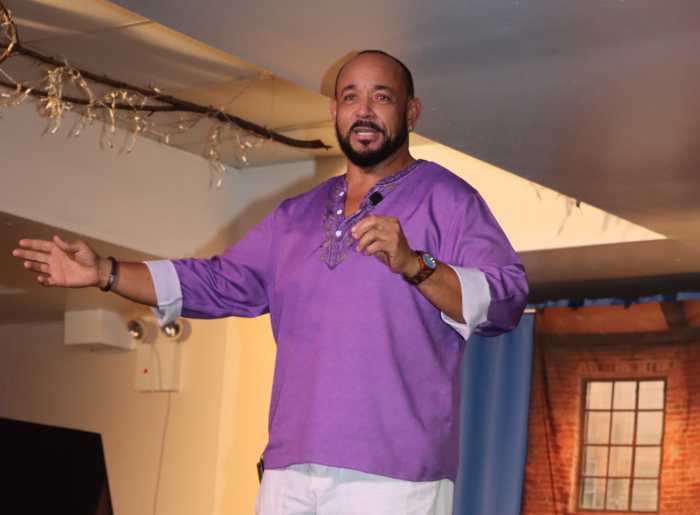Borough President Marty Markowitz’s decision to hold a little-publicized
meeting this week addressing overdevelopment in southern Brooklyn —
which he called “suburban Brooklyn” in a recent newsletter —
incensed residents in Brownstone Brooklyn, who say they are facing projects
of a greater scale.
Residents who learned of the May 10 meeting, held at a public school in
Bensonhurst, saw it listed on Markowitz’s Web site and spread the
word by mouth and e-mail around Prospect Heights, Fort Greene and Park
Slope.
Those neighborhoods include and border the site of developer Bruce Ratner’s
proposed Atlantic Yards, on which he plans to build a professional basketball
arena for his New Jersey Nets and 17 high-rises of housing and office
space. Markowitz has from the beginning been a champion of the project,
which relies on the state’s condemnation of private property using
its power of eminent domain.
Asked last Friday afternoon why no notice had been sent to local media
about the town hall-style meeting in Bensonhurst, Markowitz spokeswoman
Jocelyn Aframe said she was working on sending out press releases, which
were faxed and e-mailed later that afternoon.
“Hopefully they will know about it in time to go to the meeting,”
she said, acknowledging that the notice was sent out past the deadlines
for every weekly newspaper in the borough.
“If you didn’t read about it on our Web site, I’m sorry,”
she said.
[Although the Markowitz press release about Tuesday’s meeting made
no reference to it, the next overdevelopment meeting, according to his
Web site, is scheduled for May 31 at 6 pm. It will be held at a public
school in Marine Park, at 1925 Stuart St. at Fillmore Avenue.]
In Markowitz’s April newsletter, titled “Brooklyn!!,” he
touts efforts to rezone portions of Bensonhurst and Bay Ridge, the latter
of which he calls, “the largest rezoning effort taking place in the
Borough of Brooklyn today.”
The piece, headlined ‘Saving Brooklyn’s Communities,” blames
“rapid, unplanned development in some of Brooklyn’s most suburban
neighborhoods” for “changing the character and scale of some
communities,” and notes that the borough president asked Mayor Michael
Bloomberg to “make rezoning of overdeveloped Brooklyn neighborhoods
and those facing overdevelopment a priority.”
The Ratner project, which will encompass 24 acres and stretch from Atlantic
and Flatbush avenues to Vanderbilt Avenue and Dean Street, will host 17
high-rises and at least four skyscrapers — one reaching as high as
600 feet tall — and swallow four city street-beds.
Fort Greene-Prospect Heights Councilwoman Letitia James, who fervently
opposes the arena plan, said she was insulted Markowitz would overlook
her area.
“The project is the largest that this borough has seen in over three
decades,” she told The Brooklyn Papers. “A project that is going
to fundamentally reshape the borough of Brooklyn and its landscape.
“It’s further unfortunate that, according to the borough president’s
own newsletter, he wants to divide Brooklyn in half — urban versus
suburban — that this borough president would want to protect ‘suburban
Brooklyn’ and not ‘urban Brooklyn,’” James said, adding
“Those are his words, not mine.
“It’s a civil war,” she fumed.
Patti Hagan, an outspoken member of the Prospect Heights Action Coalition,
which formed in opposition to the arena plans, called the terms used by
Markowitz to distinguish between the downtown-neighboring residential
areas and those in southern Brooklyn “a phony distinction.”
“There is one Brooklyn, and its all very urban,” she said. “That
[suburban] Brooklyn doesn’t exist.”
Lucy Koteen, a member of Develop-Don’t Destroy Brooklyn, another
group that opposes the Ratner plan, said that Tuesday’s meeting actually
served to unite the roughly 100 northern and southern Brooklynites who
attended. [See related story.]
“Everybody in the room was in agreement and supporting one another
in our various development sites,” said Koteen. “This is one
Brooklyn, and we feel the same — Brooklyn is an endangered species.
“I said to Marty [Markowitz], ‘You’re talking about suburban
Brooklyn, what is it that we in Fort Greene and Prospect Heights are,
‘urban Brooklyn?’ Isn’t that some sort of coded language?”
Koteen, a mother and Fort Greene Association member who owns a brownstone
added, “I have labored on my own house with no subsidies.”
But residents who didn’t catch wind of the overdevelopment meeting,
from neighborhoods such as DUMBO, Downtown Brooklyn, Fulton Ferry and
Brooklyn Heights, which have been concerned with height limitations and
spot-zoning, say they, too, are concerned that their low-rise neighborhoods
will suffer.
Judy Stanton, executive director of the Brooklyn Heights Association,
was surprised this week to hear about the meeting from a reporter and
sounded almost amused to find it was in Bensonhurst.
“An overdevelopment hearing in Bensonhurst!” she said.
“We are alarmed by the overdevelopment that we think is taking place
in DUMBO,” she said, “But it’s very indicative of what
the real estate climate is, and all around the edges of Brooklyn Heights
we’ve done the best to try to maintain contextual zoning.
“The schools and the subways are not growing fast enough,” Stanton
said, noting the added burden on city infrastructure of all the development
planned in Downtown Brooklyn and DUMBO.
She also cited the added density of all the housing now planned as part
of the Brooklyn Bridge Park development along the waterfront between the
Manhattan Bridge and Atlantic Avenue.
“Our historic district is obviously protected, but it’s kind
of a site-by-site basis” in other areas, said Stanton.
“With people trying to get every square inch of profit out of every
existing footprint, that’s of concern, because some of these historic
row houses are being compromised,” said Stanton.
“People are coming here for human scale,” she said. “When
people come to Brooklyn they want to see houses,” she said. “If
they wanted to live in Manhattan, they wouldn’t be coming here.”


